As America reflects upon the 150th anniversary of the Civil War and its deciding turn at Gettysburg, thousands of Americans are donning the uniforms of yore as they re-enact the long war’s battles. Corinne Dillon talks to members of the 69th New York State Volunteer Historical Association about the continuing legacy of the Irish regiment.
This year has been a busy one down in Gettysburg, with both the one hundred and fiftieth anniversary commemoration of the most famous Civil War battle itself (July 1-3, 1863) as well as the sesquicentennial of the Gettysburg Address coming up on November 19th.
An estimated 8,000 re-enactors from the Blue Gray Alliance participated in June events marking the battle, with thousands more living historians taking part in a separate series of re-enactments in early July.
In addition, tens of thousands of spectators drove from as far north as Maine and as far south as Louisiana, the ladies in broad-brimmed bonnets and hoop skirts, the gentlemen in period wool uniforms, to watch the mock battles with the famous names: Devil’s Den, Little Round Top, Pickett’s Charge.
One hundred and fifty years after the fact, the annual Gettysburg re-enactments feel more county fair than battleground, with children slurping ginger beer and waving miniature Union and Confederate flags as the adults enjoy leisurely picnic lunches nearby.
For many of the attendees, however, Gettysburg is a sacred place and one to which they feel a deep, personal connection. Bill Jenkins of Virginia, whose ancestor was one of the few survivors of Pickett’s Charge, brings his children to re-enactments “to make sure they know, understand and are proud of who they are.” He named his sons in honor of Confederate generals James Longstreet and Jeb Stuart. Jenkins’ strong sense of himself as a Southerner is matched by Mary and John Harper’s pride in their Pennsylvania roots. “My great-great grandfather fought at Gettysburg and ended up losing a leg the following year at Cold Harbor, so my wife and I attend the battle [re-enactment] every year to honor his sacrifice,” says John, a businessman from Scranton.
“My participation is about preserving the memory of the soldiers, especially those who fell in battle, and honoring an earlier generation of 69th men,” says Ron McGovern, a New Jersey native and one of the soldier re-enactors.
McGovern, a credit analyst, has spent much of his spare time over the past 20 years “sweating in wool,” re-creating some of the Civil War’s most famous battles.
For McGovern and his colleagues who make up the 69th New York State Volunteer Historical Association, re-enacting is more than donning period uniforms, training to use a musket and camping out overnight on such hallowed ground as Antietam, Fredericksburg and Chancellor-sville. They work to preserve the memory of New York’s most famous Irish regiment, whose soldiers fought gallantly and died by the hundreds in the call to freedom.
McGovern says he has felt a close connection to the regiment since he was a kid. “My dad showed us the James Cagney movie The Fighting 69th, and told us that as Irish Americans ‘this was our regiment,’” he says. “And ever since, I’ve felt that the sacrifices of these soldiers really embodied the Irish American experience.” So when he decided to explore his passion for Civil War history through re-enacting, there was never any question as to which regiment he would align himself with. In 1992, he founded the 69th New York State Volunteer Historical Association “to serve as a visual representation to the general public of the Irish soldier in the Union Army,” and ever since, the association has participated in countless battlefield re-enactments, living histories, and New York City’s annual Saint Patrick’s Day Parade.
“Spectators can immediately identify us when we march beneath the green banner of the Irish Brigade,” says McGovern, referring to the Kelly green flag with the harp, shamrocks, and sunburst that the Brigade’s five Irish regiments – the 69th, 63rd and 88th New York Infantries, the 28th Massachusetts Infantry, and the 116th Pennsylvania – carried into battle.
Even more potent than the symbolism of the flag’s visual elements, is the famous battle cry “Faugh a Ballagh” stitched into the banners. The Irish words translate as “Clear the Way.”
“The green flag really meant something to them,” says Dr. Patrick Griffin, Madden-Hennebry Professor of History at the University of Notre Dame. “These men knew they would have to take the worst positions, often in the center of the battlefield, often against great odds, but it was a sacrifice they had to be willing to make to stake out a place in American society.”
They also knew that “fighting for American freedom was, in effect, fighting for Irish freedom,” says Griffin. They understood that “an American republic had to survive if there was ever going to be a free Ireland.”
The Irish on the Battlefields
The Irish Brigade lost more than 60 percent of the 63rd and 69th regiments at the Battle of Antietam and suffered a 45 percent casualty rate just months later at Fredericksburg.
By the time the Irish Brigade staggered off the field after participating in some of the fiercest fighting at Gettysburg in the Wheat Field and Devil’s Den skirmishes, they had lost 202 of the 530 men with whom they had gone into battle.
At the end of the war, of the 7,715 men who served with the Brigade, 961 were dead, and nearly 3,000 were wounded. For their courage under fire, many were recipients of the Medal of Honor. In the 69th regiment alone, seven soldiers were so honored, including Private Timothy Donoghue. Born in Nenagh, County Tipperary, he joined Company B, 69th New York Infantry. At the Battle of Fredericksburg, Virginia on December, 13, 1862, Donoghue voluntarily carried a wounded officer off the field from between the lines; while doing this he was himself wounded.
“They felt they could never flinch before the enemy because they were fighting for something larger than themselves,” explains Griffin.
The well-documented heroism of the nearly 150,000 Irish-born Union troops made it hard to ignore the contributions they made on the battlefield, and this reputation for bravery helped them gain acceptance into American society.
The Irish Brigade was disbanded in 1864, and between 1917 and 1992 the 69th was also designated as the 165th Infantry. Its soldiers fought with distinction in WWI and WWII.
Headquartered at the 69th Armory in Manhattan, the 69th currently consists of a single light infantry battalion (1st Battalion, 69th Infantry Regiment) and is part of the 27th Infantry Brigade of the 42nd Infantry Divisions. The regiment has seen combat in Afghanistan and Iraq.
Bringing the Flag Home
When President John F. Kennedy visited Ireland in June, 1963, he presented Eamon de Valera with one of the flags under which the 69th fought so valiantly.
In his address to the Irish Parliament, President Kennedy spoke movingly of the bravery of the soldiers:
“The 13th day of September, 1862, will be a day long remembered in American history. At Fredericksburg, Maryland, thousands of men fought and died on one of the bloodiest battlefields of the American Civil War. One of the most brilliant stories of that day was written by a band of 1,200 men who went into battle wearing a green sprig in their hats. They bore a proud heritage and a special courage, given to those who had long fought for the cause of freedom. I am referring, of course, to the Irish Brigade.
“General Robert E. Lee, the great military leader of the Southern Confederate forces, said of this group of men after the battle: ‘The gallant stand, which this bold brigade made on the heights of Fredericksburg is well known. Never were men so brave. They ennobled their race by their splendid gallantry on that desperate occasion. Their brilliant, though hopeless, assaults on our lines excited the hearty applause of our officers and soldiers.’
“Of the 1,200 men who took part in that assault, 280 survived the battle. In the fall of 1862, after serving with distinction and gallantry in some of the toughest fighting of this most bloody struggle, the Irish Brigade was presented with a new set of flags. In the city ceremony, the city chamberlain gave them the motto ‘The Union, our Country, and Ireland Forever.’ Their old ones having been torn to shreds by bullets in previous battles, Captain Richard McGee took possession of these flags on September 2nd in New York City and arrived with them at the Battle of Fredericksburg and carried them in the battle. Today, in recognition of what these gallant Irishmen and what millions of other Irish have done for my country, and through the generosity of the Fighting 69th, I would like to present one of these flags to the people of Ireland.”
The Fighting 69th Today
Lieutenant Colonel James Gonyo may not be Irish by birth, but as Battalion Commander of the Lexington Street Armory in New York City, home to the Fighting 69th since 1904, he is certainly Irish by conviction.
A 23-year Army veteran who served in Iraq, Gonyo has worn many hats over the course of his distinguished career, but says that the 69th is “a defining kind of unit” and that “the proud history, the fighting spirit and, in fact, the whole atmosphere of the regiment, is absolutely unique.”
A tour of the Armory only serves to highlight Gonyo’s claim that the 69th is immersed in history – both its own and that of the country as a whole. The Armory is a treasure-trove of 69th memorabilia, everything from the actual flags that its men carried into battle during the Civil War, to a framed photograph of President John Kennedy’s address to the Irish Parliament.
Gonyo says an integral part of his job is knowing – and sharing – the regiment’s history with its own soldiers and the public alike, which is why he welcomes the involvement of the 69th New York Historical Association’s re-enactors.
“They are absolutely immersed in the history of the regiment and are able to help us tell our story to the public. They take something that doesn’t make sense when you read it in a book or on the web and bring it alive for people.”
Re-enactors like Steve O’Neill understand the kind of impact that passionate living historians can have on those who attend the re-enactments, and on the re-enactors themselves. Steve’s son, Michael, now 31-years-old, is the one who convinced his dad to join the 69th Historical Society with him when he was just nine. And it was Michael’s time with the 69th re-enactors that inspired his real-life service: a veteran of the war in Afghanistan, the younger O’Neill served with the 1st Armored Division and is now attending college on the GI Bill. He is also a enlisted with the actual 69th National Guard unit.
Michael O’Neill happens to be Irish-American, but most members of the 69th today are not necessarily of Irish descent. According to Gonyo, however, “you can’t help but bleed green when you leave here. Regardless of where you are from or your background, we all become ‘Irish’ when we serve in the Regiment.”
Scroll over photos for captions:

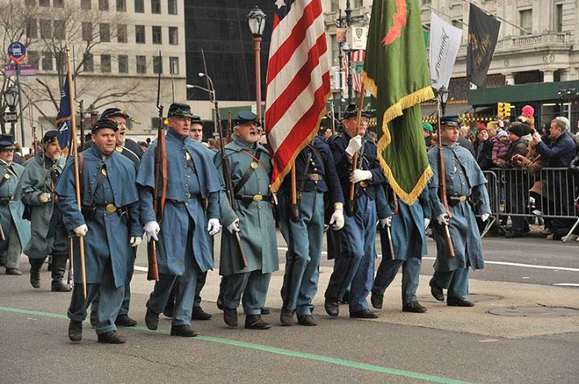
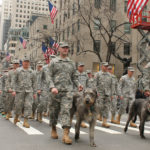
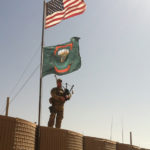
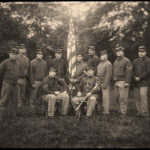
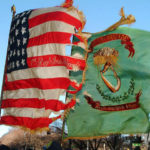
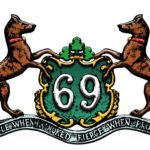
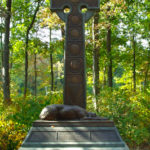
By chance have you edited the scene in the movie Fighting 69th where a fist fight erupts over their role in the Civil War?
I think that something lost in the history of the 69th is the fact that the federal government did not want to unite all those Irishmen in one continuous unit and therefore separated them into different states units. The Pennsylvania 69th held the wall against Pickett’s charge and finally fighting the confederates in fierce hand to hand combat before repulsing them. Many of the Philadelphia Irish in that unit were from County Galway. Up the Republic.